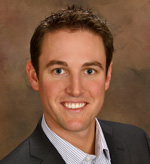The Shift from Active to Passive Management May Not Be as Radical as It Seems
Since the release of the Department of Labor’s new fiduciary rule and following many reports about the failure of most active fund managers in outperforming their benchmarks, there has been a lot of talk lately about a massive shift from active management to passive products.
According to a recent press release from Broadridge Financial Solutions, Inc., there has already been a big shift from actively managed mutual fund accounts to passively managed ETF products in 2016.
“During the first half of 2016, net new assets for passively managed mutual funds increased by $37 billion, or 14 percent, for the retail distribution channels, while actively managed funds were down by $24 billion, or 0.6 percent,” said Frank Polefrone, senior vice president of Broadridge’s data and analytics business in the press release. “With pending regulatory changes related to appropriate share class usage and the Department of Labor’s new fiduciary rule, we expect the growing use of passively managed funds by advisors, along with the increasing popularity of ETFs to continue to accelerate.”
Despite all the hype, longtime mutual fund manager Bill Miller who was best known for beating the S&P for 15 years in a row says that the shift may not be as radical as it seems. In fact, he suggests that many active fund managers are simply closet index fund managers with a higher price tag.
In a recent Bloomberg Radio podcast hosted by columnist Barry Ritholtz, Miller theorizes that most, about 70 percent, of active fund managers invest in many of the same stocks as the benchmarks they are trying to mimic or outperform, effectively creating a higher-priced index fund. The reason for this lack of deviation, he says, is due to limitations that are explicitly stated rules of a company – such as constraints on how much overweight or underweight managers can be in the various components of their benchmark – as well as preservation tactics that are inherent to one’s human nature.
Active managers with portfolios that vary drastically from their benchmarks – for example, those heavily weighted in one sector – obviously carry a much higher intrinsic risk due to the lack of diversity and hedges. On the one hand, that high-risk, high-reward model is necessary for active fund managers to outperform their benchmark and compensate for their higher fees. On the other hand, they are putting both their portfolios and their jobs on the line. In the end, most active fund managers opt to stick closely to their benchmarks.
Investors using active fund managers that are really just closet indexers wind up paying a higher price for the same outcome or worse, and those using active fund managers that deviate drastically from their benchmarks may be putting their savings on the line.
Miller shows that not only is passive fund management a cheaper alternative for the millions of buy-and-hold investors, but it is also the investment management strategy of choice for many sophisticated traders and active fund managers as well. The so-called “active to passive” shift, he says, is really a shift from expensive passive investing to cheaper passive investing.










